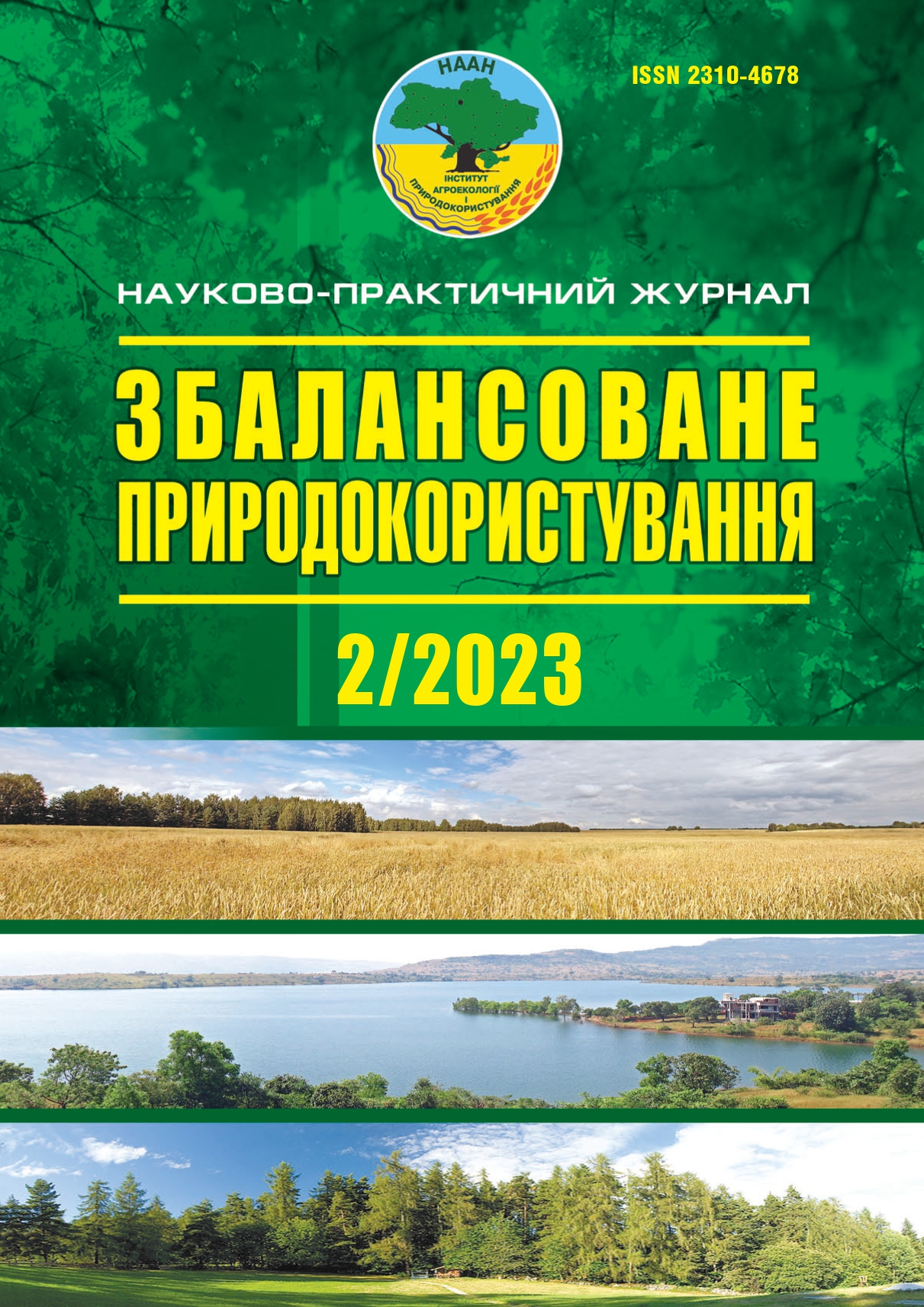Study of environmental safety and economic efficiency of digestate as biofertilizer
DOI:
https://doi.org/10.33730/2310-4678.2.2023.282744Keywords:
sustainable development, greening of agriculture, agriculture, organic productionAbstract
The conducted research is dedicated to: the importance of rational use of natural resources due to effective waste management; formation of the concept of a resource-saving agro-industrial complex due to the development and implementation of bio-organic technologies for growing agricultural crops for the production of biofuels from agro-biomass and animal husbandry waste; ensuring the energy independence of the industry and forming the country’s food security. The improved mechanism for the introduction of ecological innovations will contribute to: increasing the economic efficiency of the agricultural sector as a key factor of positive changes in order to find new, more effective and perfect implementations of ecological innovations in the development of food security of the state; reducing the impact of anthropogenic human activity on the surrounding natural environment and improving the socio-economic indicators of rural development. It was determined that the digestate contains a significant amount of mineral elements (nitrogen, phosphorus, potassium). In terms of speed of action (absorption of elements by plants), it resembles mineral fertilizers, since the elements N, P and K are easily available to plants. It was established that calculations of the cost of organic fertilizers based on cow dung, as well as digestate, which is obtained from a bioreactor during biogas production, showed that the monetary expression of organic-mineralized environmentally friendly fertilizer, which is obtained after fermentation processes from a biogas reactor, based on digestate, is worth to form by adding up the value of the nutritional chemical elements from which it is composed. Authors of the article Honcharuk I.V., Pantsyreva H.V. and Vovk V. are executors of applied research on the topic “Development of bio-organic technologies for growing agricultural crops for the production of biofuels and ensuring energy independence of the agricultural sector” (state registration number 0123U100311).
References
Mazur, V.A., Branitskyi, Y.Y., Pantsyreva, H.V. (2020). Bioenergy and economic efficiency technological methods growing of switchgrass. Ukrainian Journal of Ecology, 10 (2), 8–15 [in English].
Palamarchuk, V.D., Krychkovskyi, V.Yu. (2020). Efektyvnist vykorystannia dyhestatu pry vyroshchuvanni morkvy ta buriakiv stolovykh [The efficiency of using digestate in the cultivation of carrots and table beets]. Kormy i kormovyrobnytstvo — Fodder and fodder production, 90, 68–82 [in Ukrainian].
Mazur, V., Pantsyreva, H., Mazur, K., Myalkovsky, R., Alekseev, O. (2020). Agroecological prospects of using corn hybrids for biogas production. Agronomy Research, 18, 205–219 [in English].
Petrenko, I.O. (2020). Instrumenty ekonomichnoho zabezpechennia ekolohichnoi bezpeky v ahrarnomu sektori [Tools for economic provision of environmental security in the agricultural sector]. AhroSvit — AhroWorld, 3, 15–21 [in Ukrainian].
Rybina, L.O. (2009). Ekolohichni aspekty innovatsiinoho rozvytku APK [Environmental aspects of agricultural development innovation]. Visnyk Sumskoho natsionalnoho ahrarnoho universytetu — Bulletin of the Sumy National Agrarian University, 2, 78–83 [in Ukrainian].
Amanpreet, S., Harmandeep, S. (2020). Organic Grain Legumes in India: Potential Production Strategies, Perspective and Relevance. Legume Crops — Prospects, Production and Uses, 1–18 [in English].
Nosheen, S., Ajmal, I., Song, Y. (2021). Microbes as Biofertilizers a Potential Approach for Sustainable Crop Production. Sustainability, 13 (4), 1–20 [in English].
Kaletnik, H., Pryshliak, V., Pryshliak, N. (2019). Public Policy and Biofuels: Energy, Environment and Food Trilemma. Journal of Environmental Management & Tourism, 10 (24), 479–487 [in English].
Mazur, V.A., Didur, I.M., Pantsyreva, H.V. (2020). Obgruntuvannia adaptyvnoi sortovoi tekhnolohii vyroshchuvannia zernobobovykh kultur v pravoberezhnomu Lisostepu Ukrainy [Substantiation of adaptive varietal technology of legume cultivation in the Right-Bank Forest-Steppe of Ukraine]. Silske hospodarstvo ta lisivnytstvo — Agriculture and forestry, 18, 5–17 [in Ukrainian].
Pantsyreva, H.V. (2020). Vplyv tekhnolohichnykh pryiomiv vyroshchuvannia na zernovu produktyvnist zernobobovykh kultur v umovakh pravoberezhnoho Lisostepu Ukrainy [Influence of technological methods of cultivation on grain productivity of legumes in the conditions of the Right-Bank Forest-steppe of Ukraine]. Naukovi dopovidi NUBIP — Scientific reports of NULES, 5 (87), 1–9 [in Ukrainian].
Veklych, O.O. (2003). Ekonomichnyi mekhanizm ekolohichnoho rehuliuvannia v Ukraini [The economic mechanism of environmental regulation in Ukraine]. Kyiv: Ukrainian Institute of Environment and Resources Research [in Ukrainian]
Honcharuk, I., Matusyak, M., Pantsyreva, H., Kupchuk, I., Prokopchuk, V., Telekalo, N. (2022). Peculiarities of reproduction of pinus nigra arn. in Ukraine. Bulletin of the Transilvania University of Brasov, Series II: Forestry, Wood Industry, Agricultural Food Engineering, 15 (64), 33–42 [in English].
Downloads
Published
Issue
Section
License
- The authors reserve the right to authorship their work and pass the journal the right to publish this work under a Creative Commons Attribution License license, which allows other persons to freely distribute the published work with the obligatory The authors of the original work and the first publication of this magazine.
- The authors have the right to make independent additional agreements on the nonexclusive dissemination of the work in the form in which it was published by this magazine (for example, to post work in the company's electronic storage or to publish as a monograph) , subject to the first publication of the link to this journal.
- Journal policy allows and encourages the placement of authors on the Internet (for example, in the repositories of institutions or on personal websites) manuscript work as to the presentation of this manuscript to the editorial board and during its editorial processing, as it contributes to The productive scientific discussion and positively affects the efficiency and dynamics of citation published work (see The Effect of Open Access).


